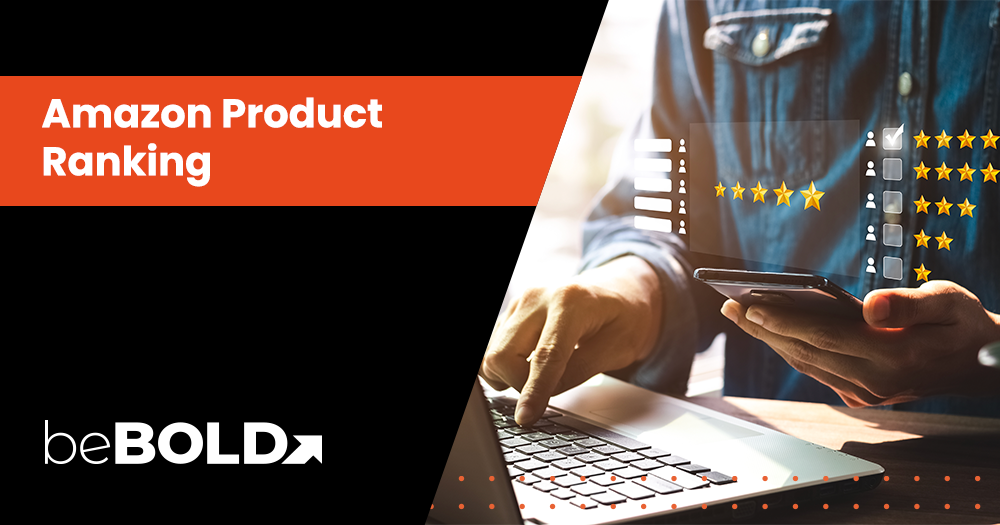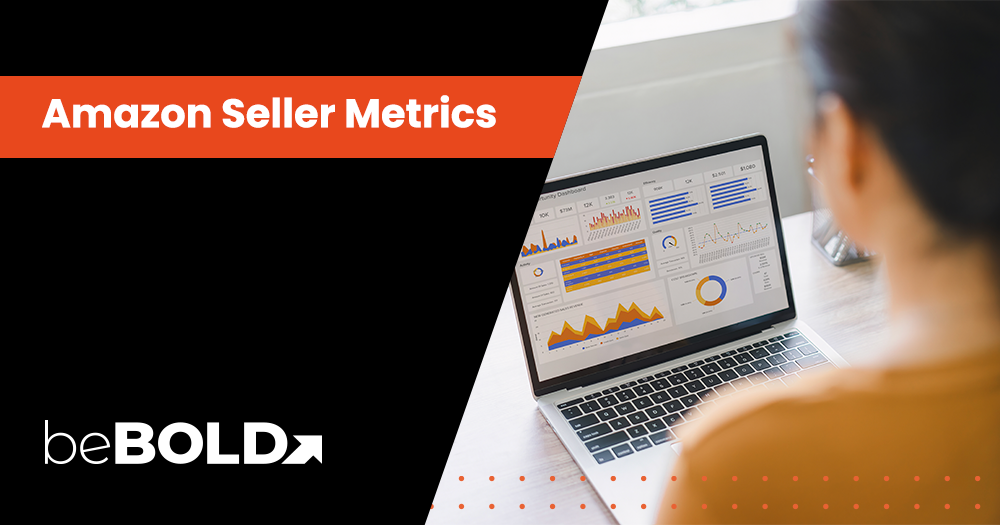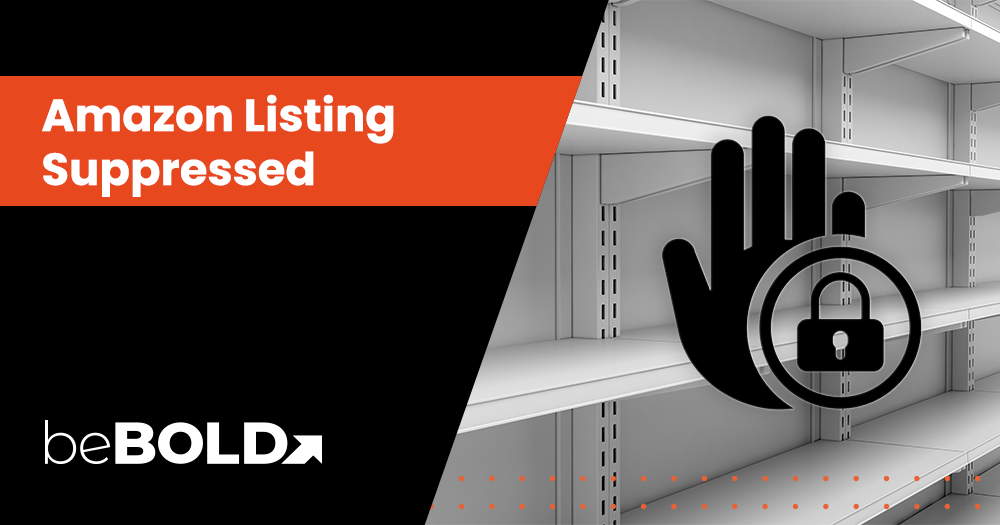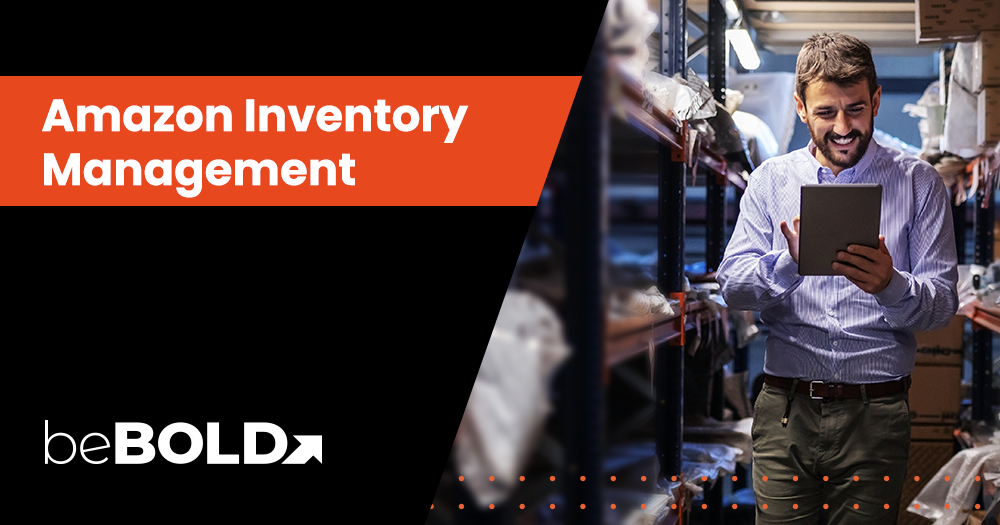If you are an Amazon seller, having your product rank high is crucial to your bottom line because otherwise, you will lose visibility and sales. Studies state that the products on the first page get 80% of the clicks, while only 30% of the shoppers go beyond the first page. You definitely don’t want to lose those sales, do you? Read our article to learn how to rank your Amazon Retail products and the different factors that affect Amazon ranking.
What is Amazon Product Ranking and the Best Sellers Rank (BSR)?
Amazon Product Ranking refers to the position of a product in Amazon's search results and category pages. It determines how visible a product is to potential buyers when they search for related items. Amazon uses a complex algorithm, factoring in sales velocity, product reviews, pricing, relevance to search terms, and fulfillment methods, to rank products. A higher ranking means the product appears closer to the top of search results, making it more likely to attract clicks and sales.
Best Sellers Rank (BSR), on the other hand, is a key metric that reflects how well a product is selling within its category on Amazon. It is updated hourly and displayed on the product's detail page. A product with a BSR of #1 is the top seller in its category, while a higher BSR indicates comparatively lower sales performance.
Amazon A9 Search Engine isn't Google
Unlike Google, Yahoo, and other search engines, people don’t come to Amazon to learn how the weather will be today or how to tie a tie. The audience that visits the Amazon site are essentially “shoppers” who are there with purchase intent and have the cash-at-the-ready.
Therefore, any of the tips and tricks we use to rank our website on Google won’t work here; ranking on Amazon is a different ball game altogether. The good news is that understanding Amazon’s algorithm is not as difficult as it looks. It’s just about mastering the few basics and making the shopper’s decision, making the journey easier.
How does Amazon’s A9 Algorithm work?
There are hundreds of thousands of search queries on Amazon every day. For each query, Amazon has mere microseconds to decide the most relevant products. Then how does Amazon decide which product wins a spot on the coveted first page and which products are left in the darkness? Here’s what Amazon has to say about that:
“Our work starts long before a customer types a query. We’ve been analyzing data, observing past traffic patterns, and indexing the text describing every product in our catalog before the customer has even decided to search.”
“One of A9’s tenets is that relevance is in the eye of the customer and we strive to get the best results for our users. Once we determine which items are good matches to the customer’s query, our ranking algorithms score them to present the most relevant results to the user.”
Amazon follows a simple two-step process. First, it filters out all the results that match the search query and then sorts/ranks them based on their relevancy. In the first step, Amazon scours through every listing to find if the copy contains words that match the search query.
If yes, the listing will be a suitable candidate to get featured somewhere on the search result pages. But we are not here to rank somewhere; we want to rank on the first page. To determine which products get featured on the first page, Amazon takes into account relevancy factors like sales and conversion.
Now that you are familiar with the workings of Amazon’s algorithm let us understand the factors that affect the ranking.
Factors that affect your product’s ranking
There are several factors that affect A9, but here we are going to cover only the most important ones. To make the product information easier to digest, we are going to break the factors down into three categories:
Conversion & performance-based factors
1) Sales velocity
Sales is the single most deciding factor for Amazon SEO. It’s pretty simple and obvious: More sales mean more ranking, and more ranking equals more sales; it’s all a vicious circle. Once you gain momentum in sales, your journey to the first page will be a whole lot easier.
But what if your product has just been launched or isn’t matching the sales volume of the 1st-page competitors? Thankfully, there are various ways through which you can artificially match their sales volume. All you need to do is increase traffic on the listing.
You can either use PPC or external sources to give your product visibility and attract more traffic. It is important to note that the increase in traffic will lead to a rise in sales only if your product detail page is retail-ready.
One metric you need to particularly focus on is Month-over-Month (MoM) sales on Amazon. It represents the percentage change in sales volume for a product from one month to the next. This metric is crucial for you as it indicates the growth or decline in a product's performance over time. Consistent growth in MoM sales often signals increased demand, which can positively contribute to higher product rank.
In short, before bringing traffic to your listing, make sure it’s fully optimized with informative content and great images.
2) Reviews
Would you buy a product that has no reviews or way too many negative reviews? Probably not, and neither will your customers. Amazon is very well aware of that, and that is why reviews are a critical factor in determining how high your product will go.
The quality and quantity of your reviews affect the click-through rate, conversion rates and, ultimately, sales. Although beneath the folds, your shoppers won’t miss taking a glance at the reviews before making a purchase decision.
There are a number of ways through which you can gain more reviews. You can either use a feedback tool or parcel inserts to prompt customers to leave reviews. Just always make sure to do everything within the review guidelines set by Amazon and you are good to go.
3) Customer answered questions
The questions that shoppers ask on the product page are just as important as reviews. In the “Customer questions & answers” section, potential shoppers look out for and ask for the information they didn’t get in the product copy.
Other customers who have already bought the item or the seller himself can answer the questions. Sellers should make sure no question is left unanswered and also that the answers displayed are relevant. They can also use these questions to fill out the information gaps in their content.
4) Price
In the end, it all comes down to the price, doesn’t it? All customers want is a great deal they can brag about. Apart from being a determining factor for the Buy Box, the price also decides the fate of your product’s ranking. This is because competitive prices lead to better conversion and increased sales, which equals a higher ranking.
Amazon’s algorithm is optimized to display the relevant and best-priced products, so if you are priced higher, your competitors will get the limited seats available in the search results on the first page. A slightly lower price can give you a competitive advantage, and you can move up in the search results pages.
5) Fulfillment method
Is your product eligible for super-fast two-day shipping? If not, the chances are thin that your product will be on the first page. It is an unwritten rule that Amazon favors sellers who choose FBA as their fulfillment channel versus those who fulfill on their own. Using FBA will also give you the “Prime badge” (unless you use ‘Seller Fulfilled Prime’). Amazon has over 150 million Prime subscribers. Now, that’s a huge chunk of shoppers. Unless you have a Prime label, Prime members won’t even click on the listing because the label clearly appears in the search result pages. This is why it is necessary that you use FBA, and there’s nothing bad about it. In fact, you will be free from the hassle of storing, picking, packing and delivering the products.
6) Images
Content is great, but pictures pack a punch. An attractive main image can boost CTR, while high-quality infographics, lifestyle and listing images can increase conversion, both of which are fundamental metrics for organic ranking. Images can easily compensate for the lack of physical contact; therefore, you should have enough images that give your product some perspective, show your product from every angle, highlight product size, give customers the details and also highlight the USPs of the product. Here are some of our previous blogs that will help you create images that give you a competitive edge and please the A9 god:
- Beauty Infographics for Amazon Product Detail Pages & Why Products Need Them?
- Best Practices For Creating Mobile Ready Hero Images On Amazon
Relevancy based factors
1) Product Title
A good product title can accelerate your CTR and help Amazon decide if your product matches the customer’s search query or not. If your title lacks the terms of the shopper’s search query, your product won’t rank at all. Optimizing your titles is critical because ignoring them can drastically reduce your chances of success on Amazon. No matter what product you are selling, your title should contain the main and synonym keywords, brand name, color/flavor/variant, size/quantity and one or two benefits. Amazon usually allows you to add up to 200 characters in the title, but the limit changes with categories. Make sure to follow Amazon-style guides for the title because Amazon suppresses listings with oversized tiles.
2) Bullet Points
Your bullet points should feed customers with the information required to make a purchase. Bullets are essentially located “above the folds,” so shoppers can see them without scrolling down. In fact, bullets are among those things your shopper first sees when they land on the product detail page. Clear, scalable and keyword-packed; that is how your bullet points should be. Keep your bullet points comprehensive and information-rich yet never bulky and information-packed. Include one keyword in each bullet point, and voila, the perfectly optimized bullet points are ready to boost conversions.
3) Product Description
Description is a great place for storytelling and to expand your keyword reach. Amazon Premium sellers choose to leave the description space blank, thinking shoppers are never going to read anything, but they are wrong. There are a few scrutinizers who read each and every line before buying something. Even if other shoppers don’t bother reading product descriptions, they are a great place to add a few more relevant keywords that Amazon’s bots can scan.
4) Backend Search Terms
Often overlooked but equally important, search terms are invisible to the shoppers, but they play a significant role in improving your product’s searchability and findability.
Most Amazon Professional Sellers make the mistake of adding their main and other high-volume keywords in the search term field, while in reality, you should never repeat the keywords used in the title of the search terms. Instead, take your keyword list, create a unique word string and remove all the keywords and terms you have used in the title. The list you get is your perfectly created search terms.
You can use Helium10’s Frankenstein tool to create word strings and remove any duplicates. The limit is 249 characters, and to make the most of it, avoid adding misspellings, plurals, commas and special characters.
5) Subject Matter
There are five lines of subject matter and you can add up to 50 characters in each line. That means there are another 250 characters you can index for! Subject matter helps Amazon categorize your product and if you are smart enough to add keywords along with describing your product and its features, you might also increase your organic rank.
Other factors
- Parent-child: Creating variations makes it easy for customers to make choices and find color/size variations. And when you create ease for customers, Amazon is automatically pleased.
- Category and subcategory: Make sure to select the relevant category, or Amazon will have a hard time deciding if your product is relevant to the customer search query or not.
- In-stock rate: Nothing frustrates a shopper and Amazon more than seeing the product out of stock after coming to the detail page. Amazon likes sellers who have high stock rates, low cancellation and minimum refunds.
- Bounce & exit rates: It is the time a customer arrives at your product detail page and then exits without buying. Amazon wants shoppers’ journeys to be as short as possible, so you can’t afford to have a high bounce rate.
5 Effective ways to boost your Amazon product ranking
Amazon’s search algorithm, A9, prioritizes products that align with customer intent and offer a seamless shopping experience. To ensure your product stands out, you need to focus on strategies that enhance visibility, attract buyers, and foster customer trust. Here are five proven ways to boost your Amazon product ranking:
1. Choose the right product categories for enhanced visibility
Selecting the most relevant category for your product ensures it appears in the right searches. When customers browse or filter products, they often rely on category-based searches, and incorrect placement can drastically reduce your visibility. Review Amazon’s category guidelines and subcategories carefully, and periodically re-evaluate your category selection as trends evolve to maximize exposure.
2. Optimize product listings to improve Amazon search ranking
Your product listing should be a perfect blend of relevant keywords and compelling content. Start with a clear, descriptive title that includes your main keywords and product attributes. Use bullet points to highlight unique features and benefits, ensuring readability. Write a detailed, persuasive product description and include high-quality images or videos that showcase your product effectively. Regularly update your listings based on keyword trends and customer behavior data.
3. Set competitive pricing to attract more buyers
Pricing is a critical factor in Amazon’s algorithm and directly affects your product’s Buy Box eligibility. Conduct regular competitor analysis to understand the pricing landscape in your niche. Consider using dynamic pricing tools to adjust your prices based on demand, competition, and market conditions. Competitive yet profitable pricing improves your conversion rate, which is essential for better rankings.
4. Leverage Amazon advertising and promotional tools
Amazon’s advertising options, such as Sponsored Products and Sponsored Brands, can significantly increase your visibility. Use these tools to target specific keywords or audiences and drive traffic to your product listings. Additionally, run promotions like discounts or lightning deals to boost sales velocity. Higher sales, particularly in a short timeframe, signal to Amazon that your product is in demand, which can improve your rankings.
5. Prioritize customer engagement and feedback
Positive reviews and high seller ratings play a crucial role in boosting your rankings. Encourage satisfied customers to leave reviews by sending follow-up emails or using Amazon’s Request a Review feature. Address negative reviews promptly and professionally to resolve issues and demonstrate your commitment to customer satisfaction. By maintaining a strong feedback profile and offering excellent customer service, you build trust and loyalty, which ultimately enhances your product’s performance in search results.
Implementing these strategies consistently can help your Amazon product rise to the top, driving more visibility, sales, and customer satisfaction.
How is Amazon Best Sellers Rank calculated?
Amazon Best Sellers Rank (BSR), also known as the "sales rank," is a metric that reflects the popularity of a product within its category or subcategory on Amazon. It is updated hourly and provides insights into how well a product is performing in terms of sales compared to others. However, the exact formula used by Amazon is not disclosed, but several key factors influence the calculation.
1. Sales performance over time
The most significant factor in determining BSR is the number of recent sales. Amazon places higher weight on sales that occur within a short time frame. This means that a sudden spike in sales can significantly boost a product’s rank, while a drop in sales can cause the rank to decline just as quickly.
Again, you need to focus on MoM sales. MoM sales can influence a product's BSR. A steady increase in MoM sales typically leads to an improvement in BSR, as Amazon's algorithm prioritizes products with higher and consistent sales. Conversely, a dip in MoM sales can negatively affect BSR, making it harder for the product to rank prominently in search results.
This interconnected relationship underscores the importance of maintaining strong sales momentum to improve visibility and attract more buyers, creating a positive feedback loop for sustained growth.
2. Historical sales data
While recent sales carry more weight, historical sales data also plays a role in calculating BSR. Products with consistently strong sales over time are likely to maintain better rankings compared to those with sporadic sales spikes.
3. Category and subcategory placement
BSR is calculated separately for each product category and subcategory. This means a product may have different BSRs in different categories. Properly categorizing your product ensures it competes within the correct market segment, which can improve its BSR.
4. Returns and cancellations
Amazon takes into account not only completed sales but also returns and order cancellations. High return or cancellation rates can negatively affect a product’s BSR.
5. Other contributing factors
While sales volume is the primary driver of BSR, Amazon may also consider other factors indirectly, such as:
- Pricing: Competitive pricing can increase sales velocity, which improves BSR.
- Customer Reviews and Ratings: Positive reviews and higher ratings boost customer confidence and lead to more purchases.
- Conversion Rate: Products with higher click-through rates and conversion rates are more likely to improve their BSR.
Amazon product ranking tracking: How to leverage BSR to drive more sales?
Amazon Best Sellers Rank (BSR) is not just a performance indicator but also a powerful tool to refine your sales strategy and optimize product performance. By effectively tracking Amazon BSR and other related metrics, Amazon sellers can better understand market trends, improve their offerings, and drive more sales. Here’s how to make the most of BSR tracking:
1. Conduct in-depth product research to understand market demand
Analyzing the BSR of competing products in your category can help you gauge market demand and identify opportunities. Products with consistently low (better) BSR indicate high demand, while higher BSR may suggest limited sales potential. Look for trends in seasonal fluctuations or emerging niches by monitoring changes in BSR over time. Use these insights to select profitable products, refine your pricing strategy, or introduce complementary items to your inventory.
2. Monitor key sales metrics to optimize performance
BSR is closely tied to sales performance, making it essential to track key sales metrics such as conversion rates, customer reviews, and sales velocity. Consistent tracking can reveal patterns or anomalies, such as drops in sales due to poor product reviews or competition. Using these insights is a great way to improve product listings, enhance your customer service, and run targeted marketing campaigns. For instance, a slight dip in BSR may signal an opportunity to adjust pricing or launch a promotional offer to boost visibility.
3. Utilize Amazon Brand Analytics for strategic insights
Amazon Brand Analytics is a treasure trove of data for registered brands. It provides valuable insights into customer behavior, search terms, and competitor performance. By analyzing this data alongside your product’s BSR, you can refine your advertising campaigns, optimize keywords in your Amazon listings, and identify high-performing products. For example, aligning your product with trending search terms can improve both sales and BSR, while identifying underperforming keywords helps you redirect resources for better ROI.
Overcome Amazon ranking challenges and boost sales with beBOLD
As you have seen in this post, Amazon sellers often face challenges such as fierce competition, algorithm updates, and difficulty maintaining a strong product ranking. These obstacles can hinder sales growth and limit your brand’s potential. This is where we, beBOLD, a trusted Amazon agency, step in to provide the expertise and tools needed to overcome these challenges and drive consistent success. We specialize in helping brands navigate the complexities of the Amazon marketplace. Our tailored strategies and hands-on support enable you to achieve higher rankings, increased visibility, and sustained sales growth. Book a call to start your journey with us.
Conclusion
As competition on Amazon intensifies, achieving and maintaining high product rankings in 2025 will require a proactive, data-driven approach. Whether you’re selling professional or premium products, success lies in optimizing your listings, selecting relevant keywords, leveraging advertising tools, and prioritizing customer satisfaction. Staying ahead of algorithm updates, market trends, and consumer expectations will be crucial.
Frequently Asked Questions
How long does it take to see improvements in Amazon product rankings?
Improvements in Amazon product rankings depend on factors like competition, sales velocity, and the effectiveness of your optimization efforts. While small changes, such as adding relevant keywords or adjusting pricing, can show results within days, significant ranking improvements typically take weeks or even months. Consistency in driving sales, gaining positive reviews, and optimizing product listings is key to sustained progress.
Can Amazon advertising alone boost my product to the first page?
Amazon advertising can help drive traffic and improve visibility, but it alone cannot guarantee a first-page ranking. Ads can temporarily place your product on the first page as a "sponsored listing," but achieving an organic first-page ranking requires strong sales performance, optimized listings, competitive pricing, and positive reviews. Advertising works best when combined with a solid overall optimization strategy.
What's the best way to handle negative reviews on Amazon?
Address negative reviews promptly by providing clear, professional responses and solutions. Offering refunds, replacements, or addressing concerns directly can help resolve customer issues and improve your brand’s reputation. Proactive customer service and a focus on quality can prevent negative reviews and protect your product rankings.







Comments